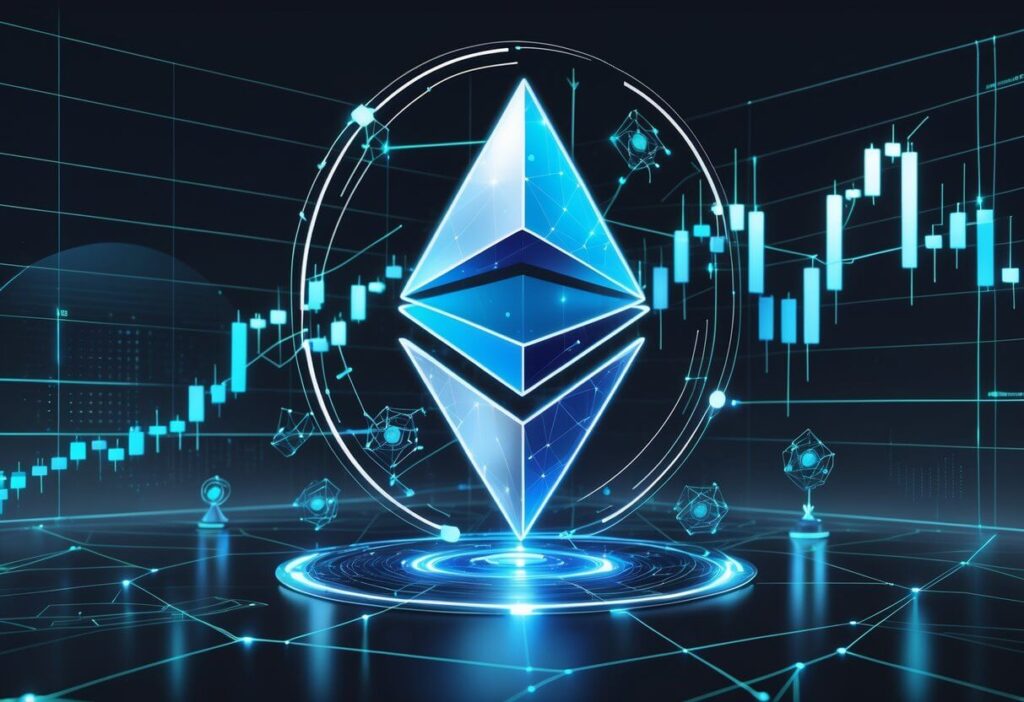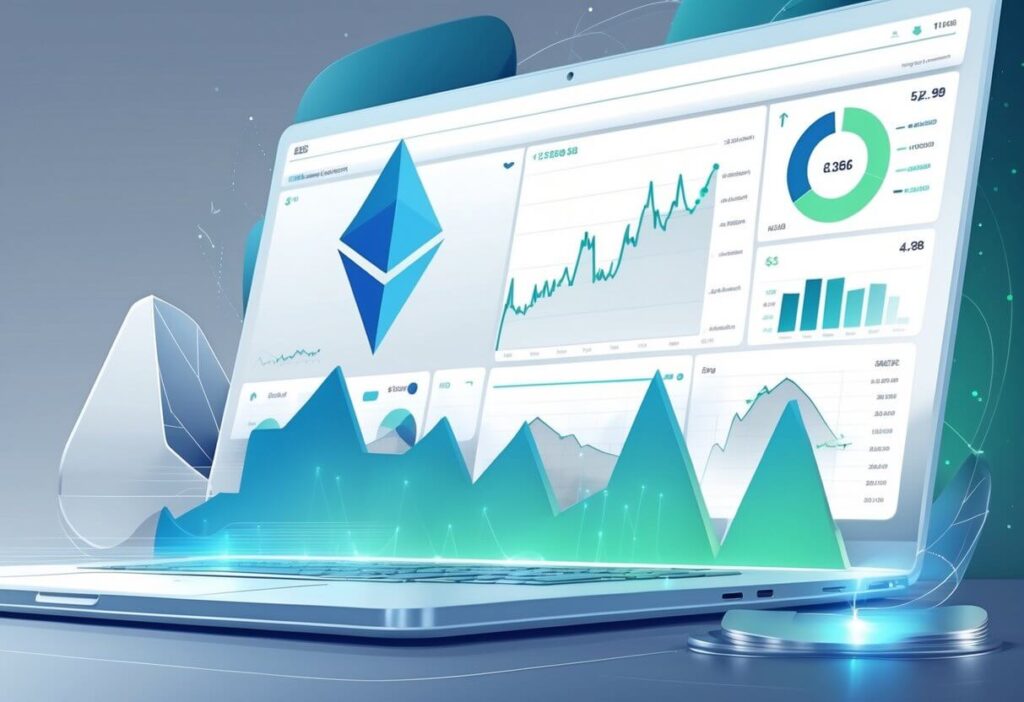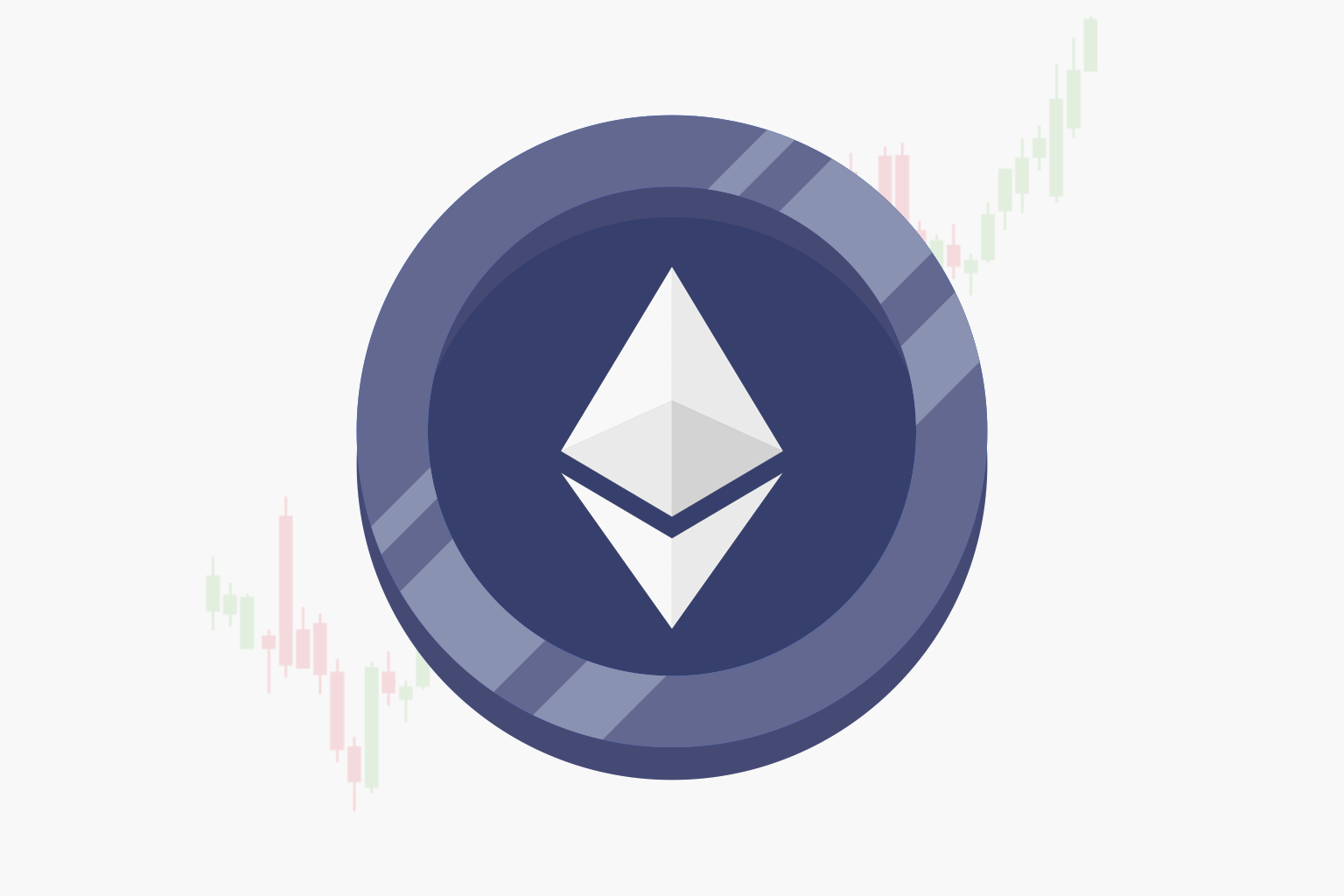Ethereum’s price moves fast in the crypto market, and staying updated on ETH’s current value is crucial for anyone looking to buy ethereum or track their investments. The live price of Ethereum currently trades around $3,700-$3,800 USD, with daily fluctuations that can impact your portfolio significantly. Understanding what drives these price changes helps you make better decisions whether you’re new to crypto or an experienced trader.

I’ll walk you through everything you need to know about ETH price movements, from real-time data and key statistics to the factors that cause sudden price swings. You’ll discover how Ethereum’s evolution from its original frontier blockchain to today’s advanced network affects its market value.
This guide covers live price tracking, trading essentials, and answers to common questions about Ethereum pricing data. By the end, you’ll have the tools and knowledge to follow ETH price trends like a pro.
Key Takeaways
- Ethereum’s price fluctuates daily around $3,700-$3,800 USD with real-time updates available across major crypto platforms
- Multiple factors drive ETH price including network upgrades, market sentiment, and trading volume patterns
- Understanding price data, trading hours, and related investment options helps you make informed ethereum decisions
Live ETH Price & Change
ETH currently trades around $3,750-$3,850 across major exchanges with daily price swings of 2-6%. The Ethereum price shows consistent volatility patterns with intraday movements often driven by trading volume and market sentiment.
Intraday Chart (1 Day)
I track ETH’s live price movements throughout each trading day to identify key patterns. The current Ethereum price sits at $3,844.80 with a 2% increase from yesterday’s levels.
Key Intraday Metrics:
- Current Price: $3,844.80
- 24h Change: +2%
- 24h Volume: $32.5 billion
- Market Cap: $463.5 billion
Ether typically experiences its highest trading activity during U.S. market hours. I notice price movements often spike between 9 AM and 4 PM EST when institutional traders are most active.
The live ETH trading volume reaches $28.42 billion in the past 24 hours. This high volume indicates strong market interest and liquidity.
Intraday support levels usually form around psychological price points like $3,750 and $3,800. Resistance often appears near round numbers such as $3,900 and $4,000.
Historical Chart (1 Year)
Looking at Ethereum price over the past year reveals significant growth trends and volatility cycles. The one-year chart shows ETH has gained substantial value despite periodic corrections.
12-Month Price Performance:
- Starting Price: ~$3,400 (August 2024)
- Current Price: $3,844.80
- All-Time High: $4,721.07 (November 2021)
- Year-over-Year Growth: +13%
I observe that Ethereum’s all-time high remains $4,721.07 from November 2021. The current price sits 19% below this peak level.
Major price catalysts over the past year include institutional adoption, ETF approvals, and network upgrades. The Ethereum price has shown resilience during market downturns.
Monthly averages indicate ETH maintains an upward trajectory despite short-term volatility. The historical chart reveals consistent buying pressure during market dips below $3,500.
Key Stats (Bullets)

Current Market Position • ETH price has traded between $2,300 and $2,800 over the last 30 days • The token sits 48% below its all-time high • Ethereum futures open interest surged 40% to $36 billion in 30 days
Investment Flows • Spot ETH ETFs marked four consecutive weeks of inflows • BlackRock holds 1.5 million ETH worth $2.71 billion • The firm bought $500 million in Ether over 10 days
ETF Performance • Ether ETPs attracted $296 million last week • Seven straight weeks of inflows since Trump’s election victory • Ether ETPs now make up over 10.5% of total crypto ETP assets
Technical Indicators • ETH holds support above the 200-day moving average • Gaussian channel suggests potential rally to $3,100-$3,600 • Current price stabilized above key indicator at $2,570
Network Activity • Gas fees remain variable based on network demand • Market cap reflects current consolidation phase • Investment interest shows growing institutional confidence
Latest News & Drivers
ETF Inflows Drive Major Price Movement
I’ve observed significant developments in Ethereum’s recent performance. ETH ETF inflows hit $533M in one day, creating substantial upward pressure on prices.
Ether ETFs crushed Bitcoin ETFs with record $726 million single-day inflows. This represents unprecedented institutional interest in Ethereum.
Whale Activity Increases
Large investors are making notable moves. A whale recently acquired 1,501 ETH at $2,530 per unit, totaling $3.797 million.
Sharplink ramped up ETH buying with a $64M purchase. They now outpace Ethereum Foundation reserves.
Current Price Dynamics
I see Ethereum price nearing $4K as fresh capital flows in. The rally isn’t coming at Bitcoin’s expense.
Key Resistance Levels
The $4,500 resistance level remains a key barrier for bulls. Breaking this level could signal further upward momentum.
Market Performance Trends
Ethereum gains attention as performance outpaces Bitcoin. This shift in relative performance attracts more investor focus.
Recent 24-hour trading shows ETH dropped below 2,200 USDT with only a 0.45% increase, indicating some short-term volatility despite longer-term bullish trends.
What Moves ETH?
Several key factors drive Ethereum’s price movements that I track regularly. Network activity plays a major role through decentralized applications usage and transaction volume.
The shift from proof-of-work to proof-of-stake fundamentally changed ETH’s supply dynamics. Staking now locks up millions of ETH tokens, reducing circulating supply while validators earn rewards.
EIP-1559 introduced a fee-burning mechanism that destroys ETH with each transaction. Higher network usage means more ETH gets burned, creating deflationary pressure on supply.
| Category | Impact on Price |
|---|---|
| DeFi Growth | Higher demand |
| NFT Activity | Increased fees |
| Staking | Reduced supply |
| Fee Burning | Deflationary pressure |
Decentralized finance protocols generate significant ETH demand for collateral and governance. Popular DApps drive transaction fees higher during busy periods.
Stablecoins built on the Ethereum network create consistent demand for ETH to pay gas fees. Major DeFi protocols often require ETH deposits.
NFTs caused massive price spikes during peak trading periods. Smart contract interactions from gaming and Web3 applications add steady demand.
Market sentiment around blockchain adoption affects all cryptocurrency prices including ETH. Regulatory news and institutional adoption create major price swings.
The Ethereum network’s roadmap updates and scaling solutions influence long-term price expectations. Developer activity and ecosystem growth signal future demand potential.
Trading Hours & Settlement

ETH trading never stops. I can buy and sell Ethereum 24 hours a day, 7 days a week. This is different from stock markets that close on weekends.
Key Trading Facts:
- 24/7 availability on all major exchanges
- No market holidays or closures
- Global access across time zones
Most cryptocurrency exchanges process ETH trades instantly. I don’t have to wait for market opening bells or worry about after-hours trading restrictions.
Settlement Times:
| Transaction Type | Settlement Speed |
|---|---|
| Exchange Trading | Instant |
| Wallet Transfers | 1-5 minutes |
| Bank Withdrawals | 1-3 business days |
Currency exchange platforms like Binance and Coinbase let me trade ETH at any time. The live Ethereum price updates constantly as traders buy and sell around the clock.
ETH transactions on the blockchain typically confirm within minutes. However, converting ETH back to traditional currency through my bank can take longer.
Important Notes:
- Peak trading hours often align with US and European business hours
- Network congestion can slow transaction times
- Weekend trading volumes are usually lower
I can place orders anytime, but liquidity varies throughout the day. The busiest trading periods typically offer the best prices and fastest execution.
Related Indices & ETFs

I can track ETH price movements through several spot Ethereum ETFs that launched in July 2024. These funds hold actual Ethereum tokens and trade on traditional stock exchanges.
Major Spot ETH ETFs:
| Fund | Ticker | Fee |
|---|---|---|
| Grayscale Ethereum Mini Trust | ETH | 0.15% |
| Franklin Ethereum Trust | EZET | 0.19% |
| VanEck Ethereum Trust | ETHV | 0.20% |
| Bitwise Ethereum ETF | ETHW | 0.20% |
| iShares Ethereum Trust | ETHA | 0.25% |
| Fidelity Ethereum Fund | FETH | 0.25% |
I notice the iShares Ethereum Trust ETF uses Coinbase Prime as its custodian. This connection to Coinbase provides institutional-grade security for the fund’s ETH holdings.
Futures-Based ETH ETFs:
These funds use Ethereum futures contracts instead of holding actual tokens:
- ARK 21Shares Active Ethereum Futures Strategy ETF (ARKZ) – 0.70% fee
- ProShares Ether Strategy ETF (EETH) – 1.0% fee
I can also monitor the Bloomberg Galaxy Ethereum Index for institutional price tracking. This index serves as a benchmark for ETH performance across various trading platforms including centralized exchanges like Gemini and decentralized platforms like Uniswap.
ETH ETFs provide exposure without needing accounts on Coinbase, Gemini, or DEX platforms directly.
Common Questions On ETH Price Data
ETH price data updates occur throughout the day on trading platforms, but the underlying index follows different rules than traditional assets. The index cannot be traded directly and operates on a continuous schedule unlike stock markets.
How Often Is The Price Updated?
ETH price data updates continuously during active trading hours across global cryptocurrency exchanges. Most major platforms refresh their Ethereum price data every few seconds to reflect real-time market movements.
I can see price changes happening 24/7 since crypto markets never close. This differs from traditional stocks that only update during business hours.
The frequency depends on trading volume and market activity. During high-volume periods, prices may change multiple times per second. During quieter periods, updates might occur every few minutes.
Key Update Frequencies:
- Major exchanges: Every 1-10 seconds
- Price tracking sites: Every 30 seconds to 2 minutes
- Mobile apps: Every 1-5 minutes
Why Doesn’t The Index Trade On Weekends?
ETH price indices actually do update on weekends, unlike traditional stock market indices. Cryptocurrency markets operate continuously without weekend breaks or holiday closures.
This 24/7 trading schedule means I can track Ethereum price movements any day of the week. Weekend trading often shows different patterns than weekday activity.
Many traditional investors first encountered this concept during the ICO boom when initial coin offering events happened at all hours. The continuous nature of crypto markets was new to many people used to stock market schedules.
Weekend volumes tend to be lower than weekdays. But major price movements can still occur during these periods.
Can I Trade The Index Directly?
I cannot trade ETH price indices directly since they are calculated metrics, not tradable assets. Indices track average prices across multiple exchanges but are not securities themselves.
Instead, I need to trade actual ETH tokens on cryptocurrency exchanges. The index serves as a reference point for the overall market price across different platforms.
Some financial products like ETFs or futures contracts may track ETH indices. These derivative products let me gain exposure to ETH price movements without holding actual tokens.
Trading Options:
- Direct: Buy ETH on exchanges like Coinbase or Binance
- Indirect: ETH futures, options, or ETF products
- Index funds: Some investment firms offer ETH index tracking
The key factors that determine ETH pricing include supply, demand, and market sentiment across all trading venues.
Frequently Asked Questions

Understanding Ethereum’s price involves examining supply and demand dynamics, Bitcoin’s market influence, expert forecasts, altcoin correlations, reliable data sources, and exchange rate fluctuations across different currencies.
Market supply and demand dynamics primarily determine Ethereum’s price. When more investors want to buy ETH than sell it, the price goes up.
Ethereum’s utility drives much of its demand. Unlike Bitcoin, ETH is required to pay transaction fees on the Ethereum network. This creates consistent demand as people use decentralized applications.
Market sentiment and speculation play major roles in price movements. Positive news about technological upgrades or institutional adoption can increase demand quickly.
Regulatory changes significantly impact ETH prices. Government announcements about cryptocurrency rules can cause rapid price swings in either direction.
Bitcoin often acts as a market leader for all cryptocurrencies including Ethereum. When Bitcoin prices rise, ETH typically follows the same trend.
I’ve observed that Ethereum has historically traded at about 0.1 Bitcoin per ETH token during bull markets. This ratio helps predict potential ETH price targets.
Bitcoin’s market movements influence overall cryptocurrency market sentiment. Strong Bitcoin performance usually brings more investors into the entire crypto space.
However, Ethereum can sometimes move independently based on its own network developments and DeFi activity.
Some analysts predict Ethereum could reach $40,055.99 in coming years based on increased adoption of smart contracts and DeFi applications.
More conservative forecasts suggest ETH could hit $42,000 by 2030. These predictions assume continued growth in decentralized finance usage.
Short-term predictions vary widely. Some experts see ETH reaching $5,000 to over $160,000 during the current market cycle.
I notice these predictions often depend on Bitcoin’s performance and overall crypto market conditions.
Competing blockchain platforms can impact Ethereum’s market share and price. When new platforms offer better features or lower fees, some users might switch away from Ethereum.
However, Ethereum’s established position as the leading smart contract platform provides strong defense against competition. Most major DeFi applications still run on Ethereum.
Market correlation exists between major cryptocurrencies during significant market moves. When the entire crypto market rises or falls, most altcoins including ETH move together.
Individual altcoin performance rarely affects Ethereum directly unless they represent serious technological competition.
CoinGecko and TradingView offer reliable real-time ETH price tracking with comprehensive charts and analysis tools.
Major cryptocurrency exchanges like Coinbase and Binance provide accurate live pricing since they facilitate actual trading. Their prices reflect real market activity.
Live ETH prices update every few seconds on most major tracking platforms. This ensures you get current market information for trading decisions.
I recommend using multiple platforms to verify prices before making large trades.
ETH prices fluctuate differently across various fiat currencies based on local exchange rates and demand. 1 ETH equals ₹322,286 in Indian Rupees as currency exchange rates affect conversions.
Local regulations and market access influence ETH prices in different countries. Some regions may see higher or lower prices based on supply availability.
Currency strength affects crypto investments. When the US dollar weakens, dollar-denominated assets like ETH may appear more expensive in other currencies.
Exchange rate volatility creates arbitrage opportunities between different currency markets for ETH trading.





